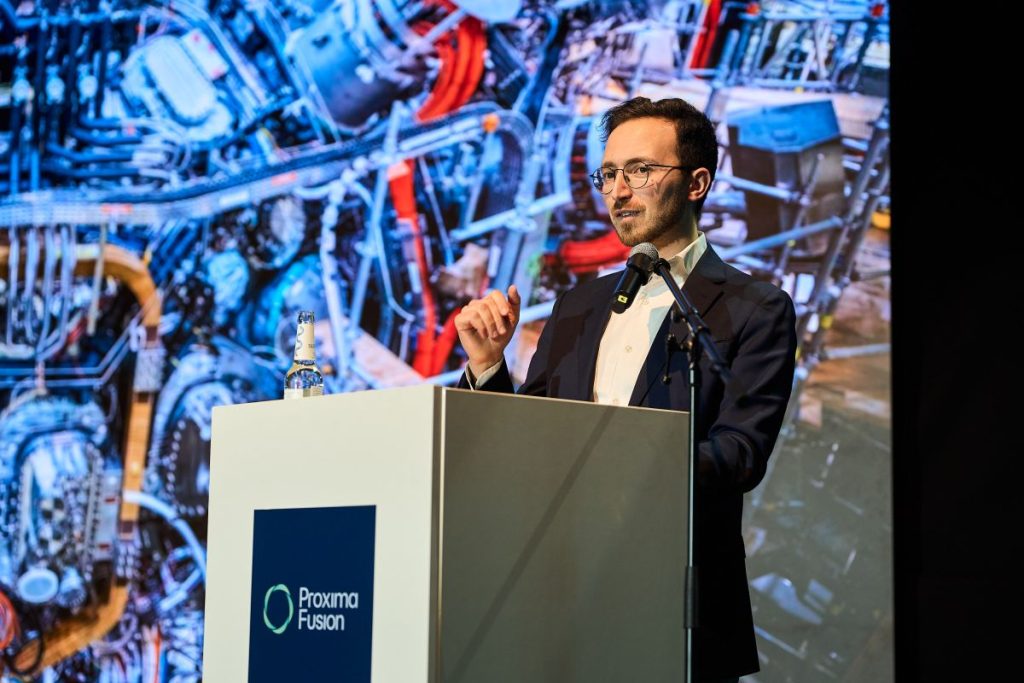In recent years, nuclear fusion has gained momentum as a potential solution for clean and abundant energy, with many startups entering the race to make this dream a reality. One company leading the charge in Europe is Proxima Fusion, a German startup that recently secured €130 million (approximately $148 million) in Series A funding. This investment positions Proxima among the top contenders in the nuclear fusion sector and highlights the increasing interest in fusion technology as an alternative energy source.
Proxima Fusion’s Recent Funding Success
Proxima Fusion has successfully raised a total of over €185 million ($200 million) in public and private funding, a significant achievement that boosts its prospects in the race for fusion energy. The funding round was led by Balderton Capital and Cherry Ventures, emphasizing the growing confidence in Proxima’s vision for a sustainable energy future. The influx of capital comes at a crucial time as energy security becomes a pressing concern globally.
Francesco Sciortino, Proxima’s CEO and co-founder, expressed optimism about the future of nuclear fusion, predicting that “in the early 2030s, you will see fusion giants in each geopolitical block” [TechCrunch]. With the company’s recent funding, it has the resources necessary to enhance its research capabilities and pursue its ambitious plans for developing a working fusion power plant.
Advancements in Fusion Technology
Proxima Fusion’s innovative approach to nuclear fusion centers around the use of a stellarator design, a type of reactor that utilizes magnetic fields to confine hot plasma. Unlike the more conventional tokamak design, stellarators can achieve stability without the need for plasma currents. This characteristic is crucial for the successful operation of a fusion reactor, as it allows for longer confinement times and reduces the risk of plasma instability.
In a peer-reviewed paper, Proxima published its plans for its own stellarator design, named Stellaris, which builds on the knowledge gained from the world’s largest stellarator, Germany’s Wendelstein 7-X. The development of this technology in half the time originally estimated showcases Proxima’s efficiency and potential in the field of nuclear fusion. Sciortino remarked, “Now we have the right kind of partners not just for this stage, but to finance us in the next stage,” indicating the strong backing from investors ready to support the company’s projects.
As Proxima aims to reach critical hardware demonstration milestones by 2027, the pressure is on to deliver tangible results in the coming years. In a broader context, nuclear fusion not only represents an opportunity for technological advancement but also addresses the urgent global need for sustainable energy. The International Energy Agency (IEA) reported that renewable energy use had increased dramatically, but fusion could provide a stable, long-term solution [IEA].
Strategic Partnerships and Future Outlook
Proxima’s funding round attracted a mix of renowned European investors, including Bayern Kapital, Club degli Investitori, and DeepTech & Climate Fonds (DTCF). This diverse participation reflects a strong belief in Proxima’s vision to decarbonize energy production and contribute to Europe’s leadership in the global energy transition. “Proxima represents an opportunity to decarbonize and provide a stable baseload for all the downstream energy needs the world has,” stated Ian Hogarth, a partner at Plural, underscoring the potential impacts of successful nuclear fusion technology.
As Proxima continues to develop its stellarator technology, the company has expressed ambitions to expand its efforts beyond German borders, leveraging partnerships with research institutes across Europe, including the Paul Scherrer Institute in Switzerland and the Culham Centre for Fusion Energy in the UK. As Sciortino noted, “We consider Proxima to be thoroughly European and not just German,” indicating a commitment to foster collaboration across nations to achieve common goals in fusion research.
Market Reaction and Community Engagement
The growing interest in fusion technology has not gone unnoticed in the market, with notable investments pouring into various startups worldwide. In the past few years, multiple fusion companies have raised considerable funds, with a significant number based in the United States. However, Proxima’s success is paving the way for increased competition and collaboration in the European market. “There’s a wave of optimism around fusion now,” explained Sciortino, reflecting a sentiment shared by many investors and researchers involved in the field. The progress Proxima has made in securing funding and advancing its technology is a testament to the potential of fusion energy as a viable alternative in the transition toward sustainable energy production.
Quick Reference Table
| Company | Funding Secured | Technology Focus | Key Investors |
|---|---|---|---|
| Proxima Fusion | €185 million ($200 million) | Stellarator Design | Balderton Capital, Cherry Ventures |
| Wendelstein 7-X | N/A | Stellarator Research | German government |
Proxima Fusion stands at the precipice of a revolution in energy production, and with ongoing support from investors and strategic partnerships, it could very well play a significant role in the future of sustainable energy in Europe and beyond.

